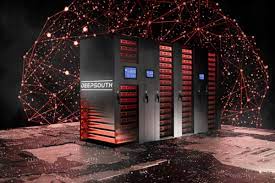
Breaking News
 They've Been Feeding You Poison (And Calling It Food)
They've Been Feeding You Poison (And Calling It Food)
 Tattoo ink may cause prolonged changes to the immune system
Tattoo ink may cause prolonged changes to the immune system
 Travel gadget promises to dry and iron your clothes – totally hands-free
Travel gadget promises to dry and iron your clothes – totally hands-free
 Duckweed: A sustainable, protein-packed food source smeared by Big Ag
Duckweed: A sustainable, protein-packed food source smeared by Big Ag
Top Tech News
 Perfect Aircrete, Kitchen Ingredients.
Perfect Aircrete, Kitchen Ingredients.
 Futuristic pixel-raising display lets you feel what's onscreen
Futuristic pixel-raising display lets you feel what's onscreen
 Cutting-Edge Facility Generates Pure Water and Hydrogen Fuel from Seawater for Mere Pennies
Cutting-Edge Facility Generates Pure Water and Hydrogen Fuel from Seawater for Mere Pennies
 This tiny dev board is packed with features for ambitious makers
This tiny dev board is packed with features for ambitious makers
 Scientists Discover Gel to Regrow Tooth Enamel
Scientists Discover Gel to Regrow Tooth Enamel
 Vitamin C and Dandelion Root Killing Cancer Cells -- as Former CDC Director Calls for COVID-19...
Vitamin C and Dandelion Root Killing Cancer Cells -- as Former CDC Director Calls for COVID-19...
 Galactic Brain: US firm plans space-based data centers, power grid to challenge China
Galactic Brain: US firm plans space-based data centers, power grid to challenge China
 A microbial cleanup for glyphosate just earned a patent. Here's why that matters
A microbial cleanup for glyphosate just earned a patent. Here's why that matters
 Japan Breaks Internet Speed Record with 5 Million Times Faster Data Transfer
Japan Breaks Internet Speed Record with 5 Million Times Faster Data Transfer
DeepSouth: Human Brain-Scale Supercomputer Goes Online In 2024

This technology emulates the brain's learning, adaptation, and processing abilities in a parallel and distributed manner intended to power AI applications.
As the video notes, "This is the beginning…" — Technocracy News & Trends Editor Patrick Wood
By: Ellie Zolfagharifard via Business Insider
• The supercomputer, named DeepSouth, is being developed by Western Sydney University in Australia.
• When it goes online next year, it will be capable of 228 trillion synaptic operations per second.
• It could one day help create a cyborg brain vastly more powerful than our own.
Our brains are remarkably energy efficient.
Using just 20 watts of power, the human brain is capable of processing the equivalent of an exaflop — or a billion-billion mathematical operations per second.

 Advanced Propulsion Resources Part 1 of 2
Advanced Propulsion Resources Part 1 of 2

